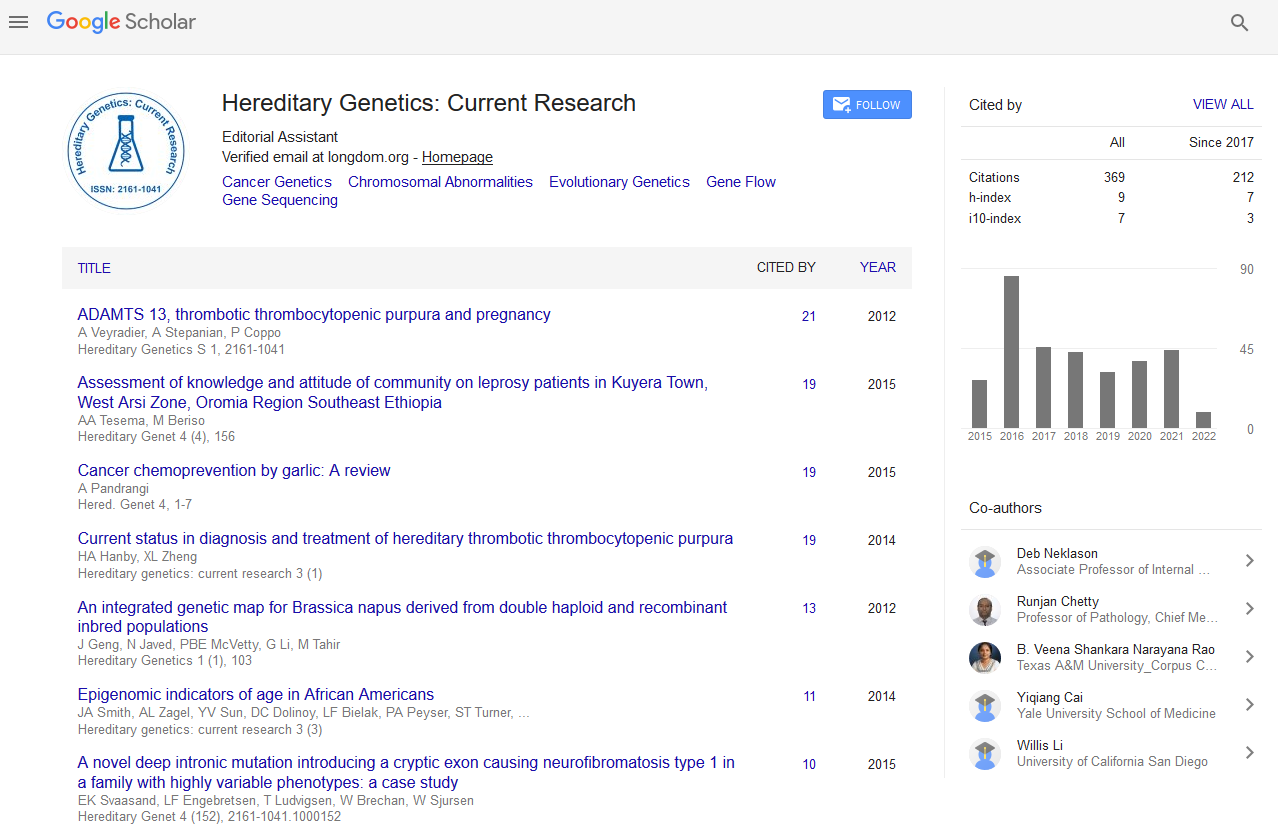PMC/PubMed Indexed Articles
Indexed In
- Open J Gate
- Genamics JournalSeek
- CiteFactor
- RefSeek
- Hamdard University
- EBSCO A-Z
- NSD - Norwegian Centre for Research Data
- OCLC- WorldCat
- Publons
- Geneva Foundation for Medical Education and Research
- Euro Pub
- Google Scholar
Useful Links
Share This Page
Journal Flyer

Open Access Journals
- Agri and Aquaculture
- Biochemistry
- Bioinformatics & Systems Biology
- Business & Management
- Chemistry
- Clinical Sciences
- Engineering
- Food & Nutrition
- General Science
- Genetics & Molecular Biology
- Immunology & Microbiology
- Medical Sciences
- Neuroscience & Psychology
- Nursing & Health Care
- Pharmaceutical Sciences
Abstract
Abnormal Hemoglobins (HbD and HbQIndia) and β-Thalassaemia among the Indian Sindhis
Kishalaya Das, Parthasarathi Dhas, Paresh Nath Sahu, V R Rao and Dipika Mohanty
The Sindhi is one of the largest linguistic communities, migrated about 65 years back from the Sind province of West Pakistan to India. Though they share so many common practices with the Punjabis (especially those from Multan) and Gujarati Lohanas restricted endogamy and occupational specificity among this community is prominent [1]. Linguistically the community has been classified under the Indo-European linguistic sub-division and racially proximity has been postulated with the Mediterranean and Alpo-Dinarics. Earlier investigation among the Sindhis of Nagpur city has revealed the existence of a number of subgroups with marked territorial identity and these subgroups were found to be heterogeneous with respect to selected sero-genetic loci [2].


